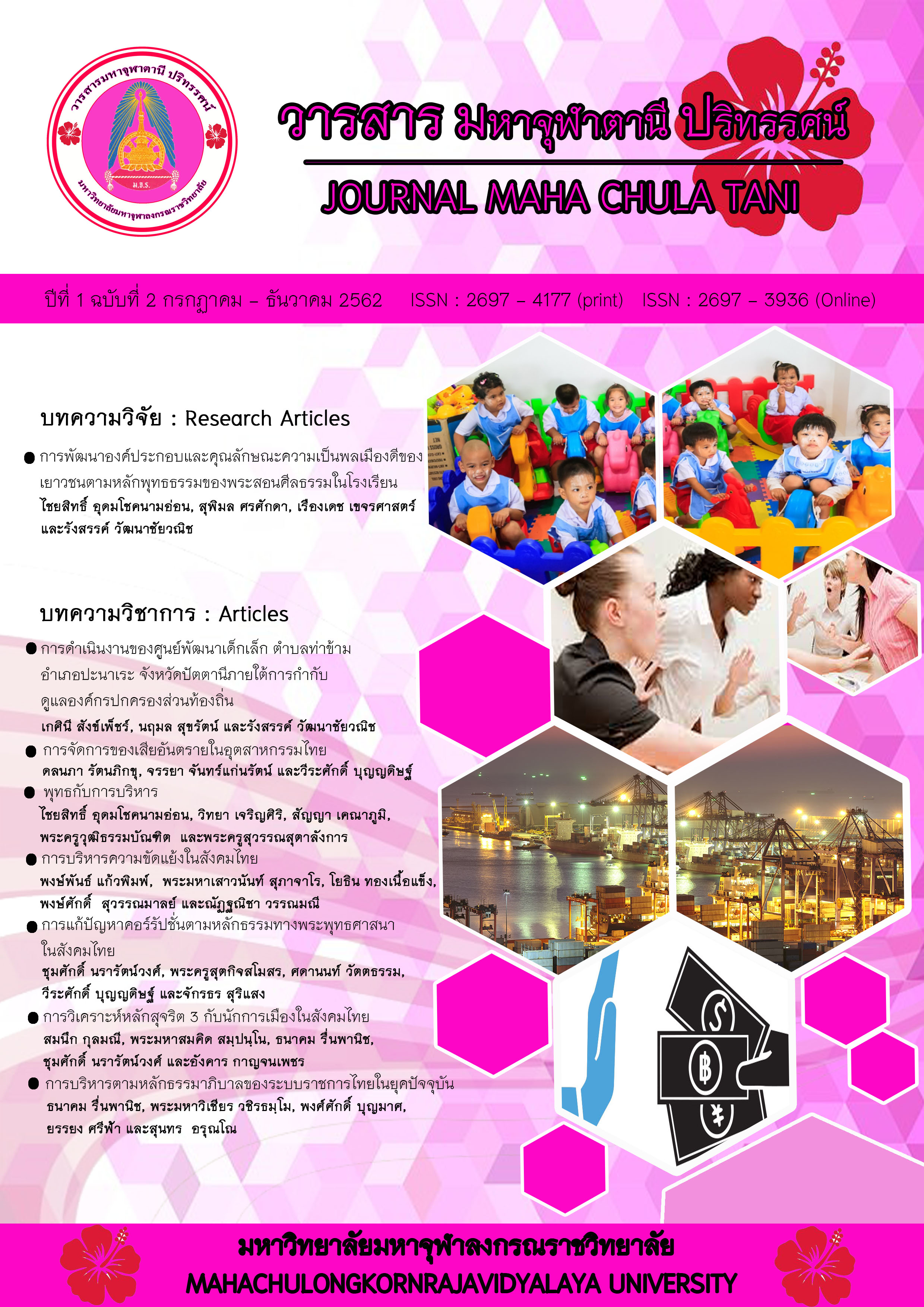Development of youth citizenship components and characteristics According to the Buddhist doctrine of the monk teaching morals in the school
Main Article Content
Abstract
This research This is a study of the strategy of developing the educational network of the General Education Division In Ubon Ratchathani Province Is a mixed methodology research using two methods of data collection, namely quantitative research model By using questionnaires (Questionnaire) with a sample of 250 people by evaluating the confidence of the instrument according to Cronbach's method In data analysis, the computer program was used to analyze the percentage, mean, standard deviation. And the qualitative research model is an interview format Open-ended questions interviewed 34 administrators / teachers, teachers and students.
The results of the research were as follows: 1) The study of the development of components and characteristics of good citizenship among youth according to the principles of Buddhism of the monks teaching morality in schools In all aspects Was at a high level (= 3.97), ie, the characteristics of good citizenship were at a high level (= 3.98). At a high level (= 3.91) in the process of enhancing the consciousness of citizenship At a high level (= 3.90) 2) Analysis of the development of components and characteristics of good citizenship among youth according to the principles of Buddhism of the monks teaching morality in schools 2.1) Teachers must have both knowledge Coupled with morality Have a moral principle Being a good example for students. 2.2) Teachers are good people, have a public mind, be a good person, have morality, have a moral principle. Humble There is a gratefulness, a moral sacrifice. See the public benefit as the location 2.3) Teachers are operated under the National Education Act. And national education strategies Able to create a happy life in society. 2.4) Teachers have a process of improving citizenship. By organizing learning activities in accordance with Buddhism in learning and development management such as the 5 sacrament principles, 4 Sangkhaharawah objects, 4 Brahmavihan principles, 4 basic values principles, etc.
Article Details

This work is licensed under a Creative Commons Attribution-NonCommercial-NoDerivatives 4.0 International License.

